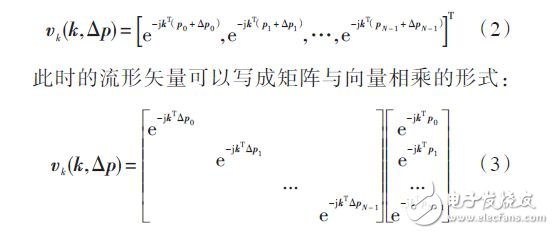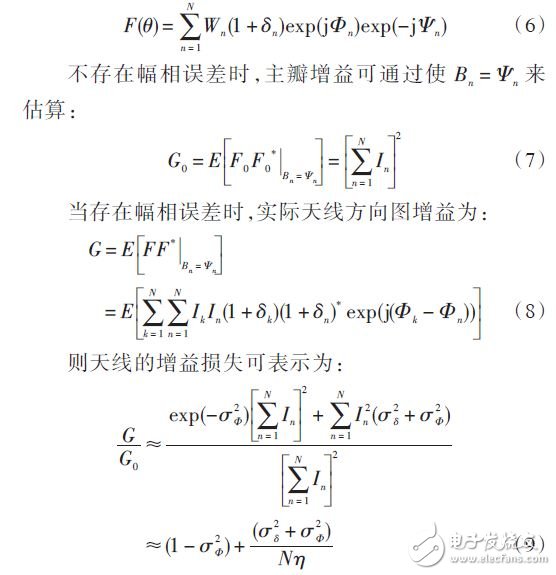0 Preface
The digital beamforming technology of phased array antennas has the advantages of multi-beam, flexible beam steering and beam reconstruction, but the existence of array channel errors makes these advantages affected. The errors of phased array antenna systems can be divided into two categories, fixed error and random error. Fixed errors are generated during manufacturing and installation, and can be accurately measured and corrected during system testing. This error is not considered in this paper. Random errors can be divided into short-term errors and long-term errors. The short-term errors are determined by the stability of the system. This paper only analyzes the long-term random errors caused by temperature, time, etc. Such errors include array element position errors caused by thermal expansion and contraction, array element aging, etc., and amplitude and phase errors caused by inconsistencies in device parameters in each channel.
1 Error modeling
First, a model of the position error of the array element is given. The array manifold vector of any array can be expressed as:

Assuming that each array element has a position error Δpn = [Δpxn, Δpyn]T, n = 0,1,-,N - 1, then the array manifold vector with position error is:

From equation (3), for each incident signal, the position error of the array element will cause a phase error in the signal received by each array element, and this phase error is related to the signal frequency and the incident direction.
The model for the amplitude and phase error between the array channels is given below. The amplitude and phase errors caused by the array element gain error and the inconsistency of the device parameters in each channel are independent of the incident angle of the signal. Assuming that the amplitude and phase errors of the channels are independent of each other, the array manifold vector with the amplitude and phase error can be expressed as:

Where: δi represents the amplitude gain error of the ith channel; Φi represents the phase error of the ith channel.
It can be seen from equations (3) and (4) that whether it is the array element position error or the array channel error, it finally appears as an influence on the array manifold vector.
2 The effect of amplitude error on digital beamforming
When there is no amplitude and phase error, the pattern of the array is:

2.1 Influence of amplitude and phase error on main lobe gain
The far-field radiation pattern of the antenna when there is an amplitude and phase error is:

It can be seen that the amplitude error and phase error of the array channel affect the main lobe gain of the pattern, and when the array element number is large, the loss of the main lobe gain of the array antenna mainly depends on the phase error.
2.2 Influence of amplitude and phase error on beam pointing
The effect of the amplitude and phase error between the array channels on the beam pointing is analyzed below. The evenly distributed array (the spacing of adjacent array elements is equal) the variance of the pointing error can be obtained by equation (10):

Where σ2Φ is the variance of the channel phase error; Ii is the amplitude weight of the ith array element; xi is the coordinate of the ith array element divided by the array element spacing d.
When the amplitudes of the array elements are equal (set Ii = 1), the variance of the N-ary array pointing error is:

The beam pointing error of the array antenna obtained by the above formula mainly depends on the phase error and is inversely proportional to the number of array elements. When the number of array elements is large, the amplitude and phase errors have little influence on the beam pointing error.
The FirstPower CFPV(2V) and LFPV(6V/12V) series stationary batteries (Opzv Battery) are the newly products which were developed at the end of 2005.
The performances meet the standard DIN40742 and IEC60896 TubularPositive plate, gel electrolyte, PVC-SiO2 and redundant design makes the battery the most reliable battery. The design life is more than 20 years.
Industrial Opzv Battery,Maintenance Free Opzv Industrial Battery,Opzv Battery Industrial Stationary Batteries
Firstpower Tech. Co., Ltd. , https://www.firstpowersales.com